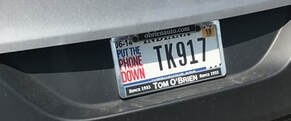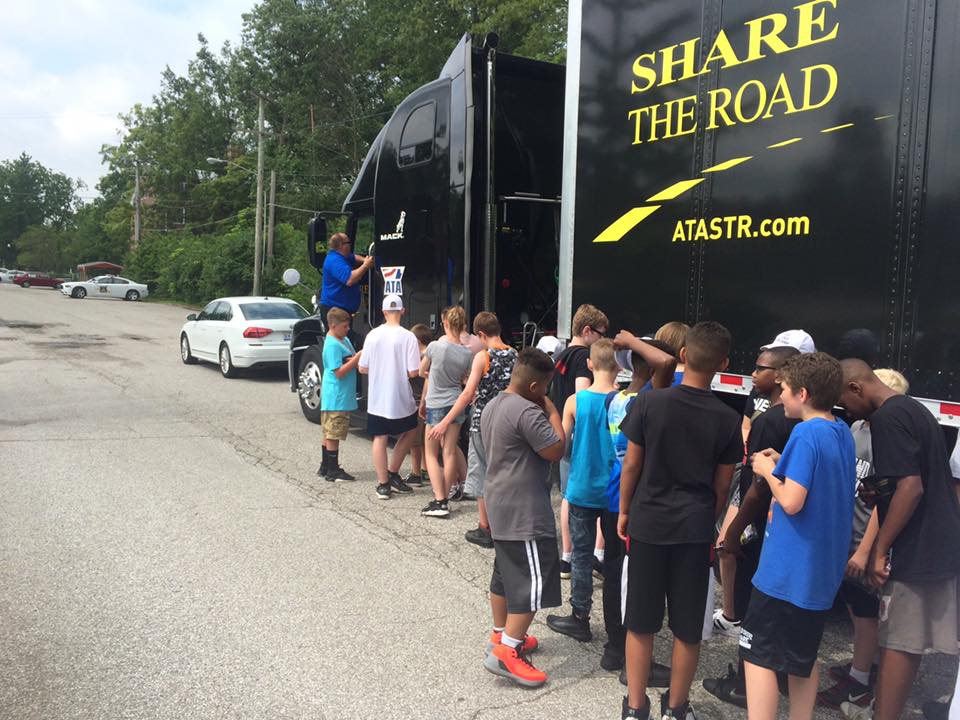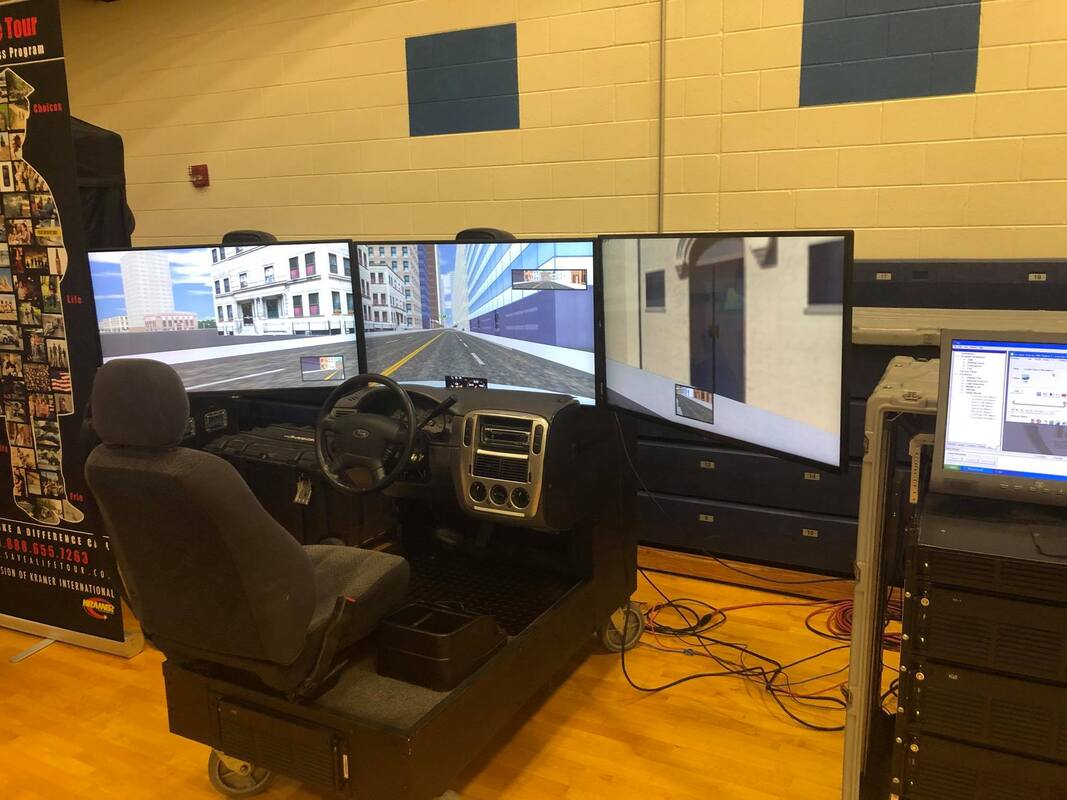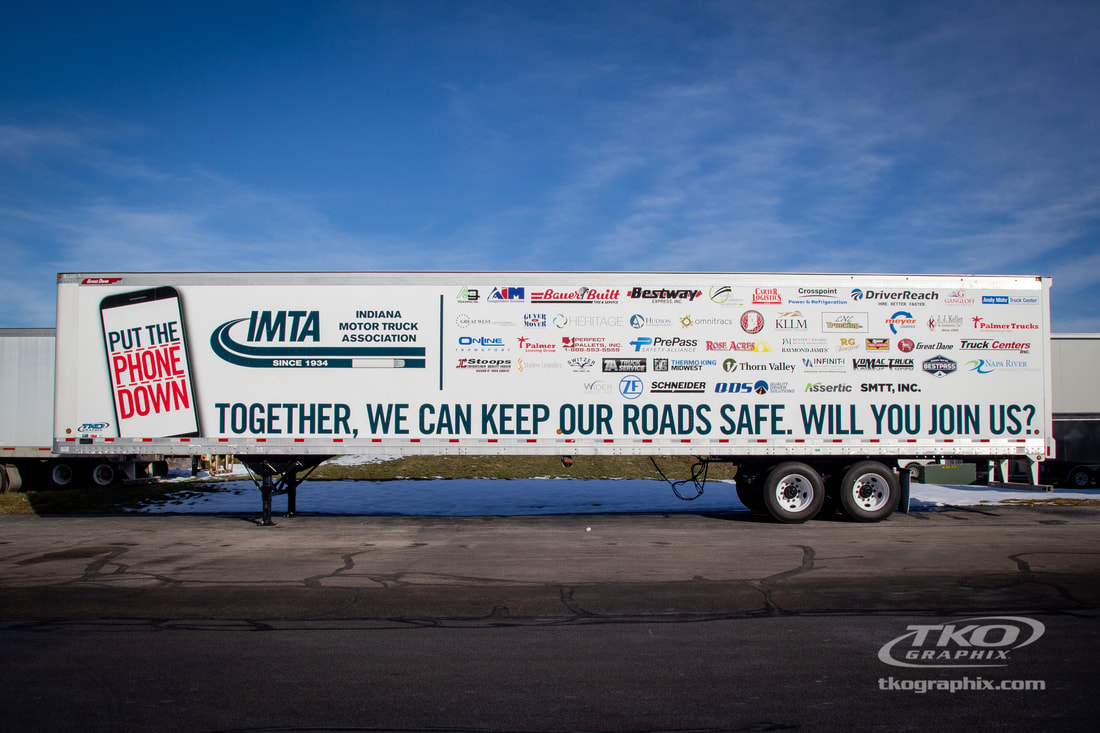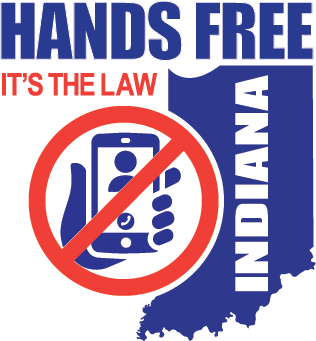
On July 1, 2020, House Enrolled Act 1070 went into effect. The law states that a person may not hold a telecommunications device while operating a motor vehicle. The objective of the law is to increase roadway safety in Indiana by updating Indiana's distracted driving law to require drivers to use hands-free technology when using a telecommunications device behind the wheel.
What is Allowed:
• People who are driving may use their device in conjunction with hands-free or voice
operated technology.
• GPS and other map apps are allowed, provided they are being used with hands-free
technology.
• Devices may be used or held to call 911 to report a true emergency.
Consequences for Violation:
• Violations can result in a Class C infraction.
• Motorists in violation can be subject to a fine.
• Starting July 1, 2021, Indiana BMV will begin adding points to records.
"Since the new distracted driving law took effect last July, the Indiana State Police and its law enforcement partners, to include INDOT and ICJI have embarked on both the education and enforcement fronts to help change this dangerous driving behavior. There would be far fewer crashes, injuries and fatalities if motorists would simply put down their cell phones and concentrate on the road in front of them," said Captain Ron Galaviz, Chief Public Information Officer for Indiana State Police.
Since the law went into effect, more than 5,400 citations and 10,500 warnings have been issued by Indiana law enforcement, according to the Indiana Criminal Justice Institute. Source: INDOT Press Release 7.1.21
What is Allowed:
• People who are driving may use their device in conjunction with hands-free or voice
operated technology.
• GPS and other map apps are allowed, provided they are being used with hands-free
technology.
• Devices may be used or held to call 911 to report a true emergency.
Consequences for Violation:
• Violations can result in a Class C infraction.
• Motorists in violation can be subject to a fine.
• Starting July 1, 2021, Indiana BMV will begin adding points to records.
"Since the new distracted driving law took effect last July, the Indiana State Police and its law enforcement partners, to include INDOT and ICJI have embarked on both the education and enforcement fronts to help change this dangerous driving behavior. There would be far fewer crashes, injuries and fatalities if motorists would simply put down their cell phones and concentrate on the road in front of them," said Captain Ron Galaviz, Chief Public Information Officer for Indiana State Police.
Since the law went into effect, more than 5,400 citations and 10,500 warnings have been issued by Indiana law enforcement, according to the Indiana Criminal Justice Institute. Source: INDOT Press Release 7.1.21
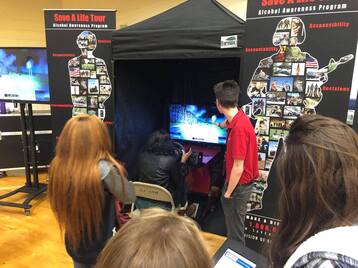
Supporters who have purchased and renewed this plate have allowed this program to bring in around $18,000 each year. 100% of these funds go toward distracted driving education within the state of Indiana. The IMTA has been to more than 25 schools. We also work with the Indiana State Police and their summer youth camp programs. We have partnered with WTHR and had a booth at the Indiana State Fairgrounds during the state fair. We have touched over 25,000 Indiana Hoosiers with this program.
Thank you for believing in the IMTA and being a part of this important message. We’re not done yet…….
Please contact Jennifer Piatt at 317-608-6720 or jennifer@intrucking.org to find out more information about the program. The best part is that the money you spend on your specialty license plate funds this program and the schools do not pay.
Thank you for believing in the IMTA and being a part of this important message. We’re not done yet…….
Please contact Jennifer Piatt at 317-608-6720 or jennifer@intrucking.org to find out more information about the program. The best part is that the money you spend on your specialty license plate funds this program and the schools do not pay.
THE FACTS: Distracted driving is any activity that diverts attention from driving, including talking or texting on your phone, eating and drinking, talking to people in your vehicle, fiddling with the stereo, entertainment or navigation system—anything that takes your attention away from the task of safe driving.
Texting is the most alarming distraction. Sending or reading a text takes your eyes off the road for 5 seconds. At 55 mph, that's like driving the length of an entire football field with your eyes closed. If someone asked you to close your eyes while you were driving for 5 seconds, would you?
You cannot drive safely unless the task of driving has your full attention. Any non-driving activity you engage in is a potential distraction and increases your risk of
crashing.
Texting is the most alarming distraction. Sending or reading a text takes your eyes off the road for 5 seconds. At 55 mph, that's like driving the length of an entire football field with your eyes closed. If someone asked you to close your eyes while you were driving for 5 seconds, would you?
You cannot drive safely unless the task of driving has your full attention. Any non-driving activity you engage in is a potential distraction and increases your risk of
crashing.
- There were 36,096 people killed in motor vehicle traffic crashes on U.S. roadways during 2019. Source: NHTSA (natil highway traffic safety administration) 2020
- The number of fatalities in distraction-affected crashes, i.e., crashes involving at least one driver who was distracted, was 3,142 or 8.7% of all fatalities in 2019. This represents a 9.9-percent increase from 2,858 in 2018. Source: NHTSA (national highway traffic safety administration) 2020
- More than 700 injury crashes involve distracted driving on a typical day in the U.S. Source: National Safety Council 2020
- Studies show that you are 23 times more likely to be involved in an accident when texting and driving. Source: Virginia Tech Transportation Institute, 2009
- 90% of crashes involve human error. Source: National Safety Council
- 57% of American drivers admit to texting behind the wheel. Source: textingndriving.com
- 74% of Americans admit to distracted driving, 19% using the web. Source: textingndriving.com
- 89% of Americans adults think sending text messages or e-mails while driving is distracting, dangerous and should be outlawed. Source: textingndriving.com
- Every day, at least nine Americans die and 1000 are injured in distracted driving crashes. Source: National Safety Council 2020
- People who text or even talk on the phone while driving suffer from "Inattention blindness" where something as obvious as a gorilla walking across the street is not seen because your mind is so pre occupied with your phone. Source: Dr. David Strayer, University of Utah
- Drivers talking on phones, hand-held or hands-free, miss seeing up 20 50% of what is around them like: other drivers, pedestrians, bicyclists. At 25mph, you can travel the length of more than one football field in 10 seconds. Source: National Safety Council 2019 & 2020
- "My job depends on me using my cell phone" - Car crashes are the #1 cause of workplace deaths with distracted driving as a leading factor in road fatalities. Fortunately, more employers are recognizing this hazardous expectation of always being connected and they are doing something about it. Dozens of Fortune 500 companies have adopted cell phone policies, banning the use of phones while driving. By eliminating this deadly distraction, employers are keeping their workforce safer. Source: National Safety Council 2019
- New technology in vehicles is causing us to become more distracted behind the wheel than ever before. Fifty-three percent of drivers believe if manufacturers put "infotainment" dashboards and hands-free technology in vehicles, they must be safe. And, with some state laws focusing on handheld bans, many drivers honestly believe they are making the safe choice by using a hands-free device. But in fact, these technologies distract our brains even long after you've used them. Make no mistake: This multitasking technology is about convenience, not safety. Source: National Safety Council 2020

- TEENAGERS:
• Half of all teens will be involved in a car crash before graduating from high school. Most often because they are inexperienced.
• Car crashes are the #1 cause of death for U.S. teens, killing more than homicide, suicide and disease combined.
• The first 12 months and the first 1,000 miles are among the riskiest miles of their lives.
• Per million miles driven, the fatal crash rate for 16-19 year olds is more than 4 times higher than the rate for drivers 35-54.
• Teens are not just killing themselves, nearly 60% of those who die in crashes involving teens are someone other than the teen. - • The economic cost of teen crashes to the nation is about 27 billion dollars, the loss to family, school and community are incalculable.
- ○ Source: National Safety Council 2020
- • 75% of American teenagers own cellphones, and 66% of these teens text message.
- • 82% of teens between 16 and 17 have a cell phone.
- • 34% of teens who text message admit to texting while driving.
- • 48% of teens say they have been a passenger in a car whose driver was texting.
- • 48% of young drivers have seen parents drive while talking on a cell phone and 15% of young drivers have seen their parents texting while driving.
- • 11% of all drivers under the age of 20 involved in fatal crashes were reported as distracted at the time of the crash. This age group has the largest proportion of drivers who were distracted.
- • 60% of drivers use cell phones while driving. Over 60% of American teens admit to risky driving, and nearly half of those also admit to text messaging behind the wheel.
- ○ Source: textingndriving.com

CHECK OUT THE IMTA BILLBOARDS AROUND THE STATE OF INDIANA
HERE IS HOW TO GET YOUR SPECIALTY PLATE
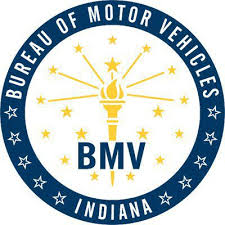
Your purchase of an IMTA specialty plate allows us to continue to sponsor safe driving programs in Indiana. Not only does this plate allow us to travel to summer camps and high schools to shed light on the dangers of distracted driving but it’s a reminder for drivers to look straight ahead and not down at their phones.
You may purchase the IMTA "Put the Phone Down" plate at any Indiana BMV license branch or certified partner location or at myBMV.
The IMTA "Put the Phone Down" plate may be registered on passenger cars, trucks up to 11,000 lb., motorcycles, and recreational vehicles. The plate may be purchased for $40, with $25 being returned to the IMTA for distracted driving programs.
Low Digit Plate: A low digit plate may be available for an additional fee. The fee charged by the BMV is due upon first issuance and again at the beginning of the new plate life cycle after 5 years. If you are interested in securing a low digit plate, please contact Jennifer Piatt at jennifer@intrucking.org. The BMV requires that you produce a signed, low-digit release form from the IMTA in order to complete your request for a low-digit plate.
CLICK here for more information and access to myBMV website.
You may purchase the IMTA "Put the Phone Down" plate at any Indiana BMV license branch or certified partner location or at myBMV.
The IMTA "Put the Phone Down" plate may be registered on passenger cars, trucks up to 11,000 lb., motorcycles, and recreational vehicles. The plate may be purchased for $40, with $25 being returned to the IMTA for distracted driving programs.
Low Digit Plate: A low digit plate may be available for an additional fee. The fee charged by the BMV is due upon first issuance and again at the beginning of the new plate life cycle after 5 years. If you are interested in securing a low digit plate, please contact Jennifer Piatt at jennifer@intrucking.org. The BMV requires that you produce a signed, low-digit release form from the IMTA in order to complete your request for a low-digit plate.
CLICK here for more information and access to myBMV website.

